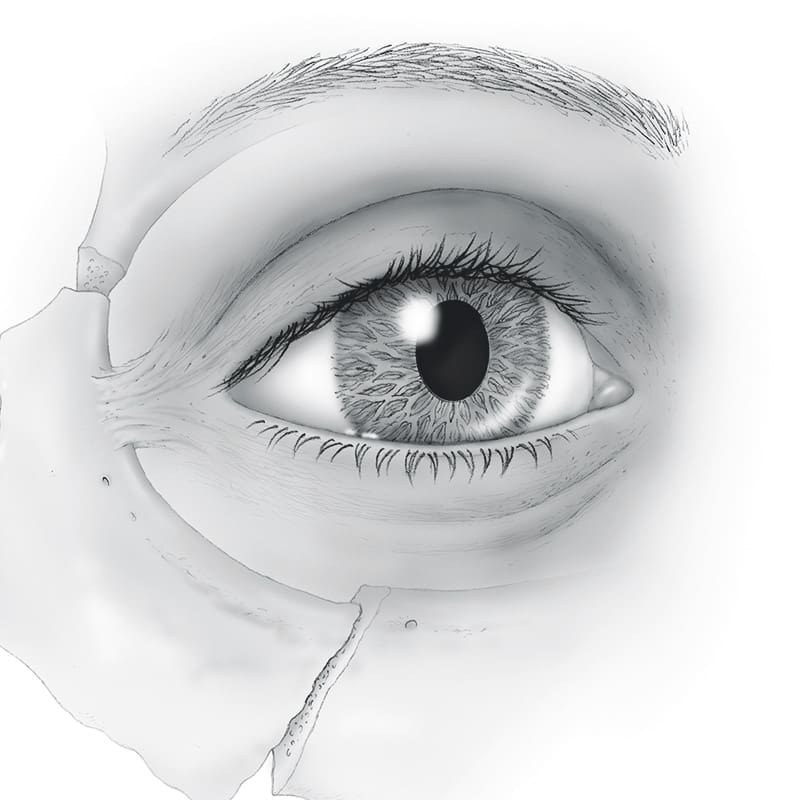Orbital Fractures
The orbit, or eye socket, is a bony opening that contains the eyeball and the muscles, blood vessels, nerves, and fat that help support it. Blunt force trauma to the head or around the eye can break the bones of the orbit. The areas along the inside wall (the wall between the eye and the nose) and floor are the thinnest and fractures are more likely to occur here. A CT scan is usually obtained to confirm the presence and exact location of the broken bone(s). Soft tissue, such as muscle or fat, may sometimes be trapped in the fracture site. Symptoms of an orbital fracture may include pain, swelling, bruising, double vision, nausea, and numbness of the cheek or upper teeth. After swelling subsides, the eye can appear sunken. It is important that the eyeball is carefully examined, as it can also be damaged as a result of the trauma.

Treatment
Not all broken orbit bones need to be fixed. If the fracture site is small, there is no bothersome double vision, and the eye doesn’t look sunken, many patients can be allowed to heal without the need for surgery. Right after the injury, it is not always clear if a patient will need surgery.
Your surgeon will follow you closely and may prescribe cold compresses, antibiotics, or a short course of anti-inflammatory pills. During this time you should avoid sneezing or blowing your nose and should not fly in an airplane or go deep-sea diving. These activities may allow air to enter the orbit, causing further discomfort and damage.
Your surgeon will usually determine whether an operation is needed within two weeks after injury. The most common reasons to consider surgery are bothersome double vision, nausea or severe pain with eye movement, or a visibly sunken eye. Your surgeon can describe the plans for your surgery based on your symptoms. Patients are put under general anesthesia for the operation and depending on the situation, may go home after surgery or stay overnight in the hospital for observation.
Most patients are swollen and bruised for several days after the operation. Though the eye is not usually bandaged, vision may be blurry for several days. Cold compresses, antibiotics or anti-inflammatory pills may be prescribed. Some patients may have double vision or numbness across the cheek that usually improves over time. Most patients may return to work or school within a week, though many surgeons prefer to limit full strenuous activity, airplane travel, and deep sea diving for several weeks after the operation.
Risks and Complications
Bleeding and infection are potential risks of any surgery. Be sure to tell your surgeon if you are on blood thinners as their use may put you at increased risk for bleeding complications. In rare circumstances, surgery in the orbit can lead to loss of vision that may be permanent. Surgery for orbital fractures may not always achieve the desired results and some patients may have persistent double vision, numbness, or asymmetry in the appearance of the two eyes.
Your surgeon cannot control all the variables that may impact your final result. The goal is always to improve a patient’s condition but no guarantees or promises can be made for a successful outcome in any surgical procedure. There is always a chance you will not be satisfied with your results and/or that you will need additional treatment. Sometimes eye muscle surgery or prism glasses can help with persistent double vision after a fracture. As with any medical decision, there may be other inherent risks or alternatives that should be discussed with your surgeon.